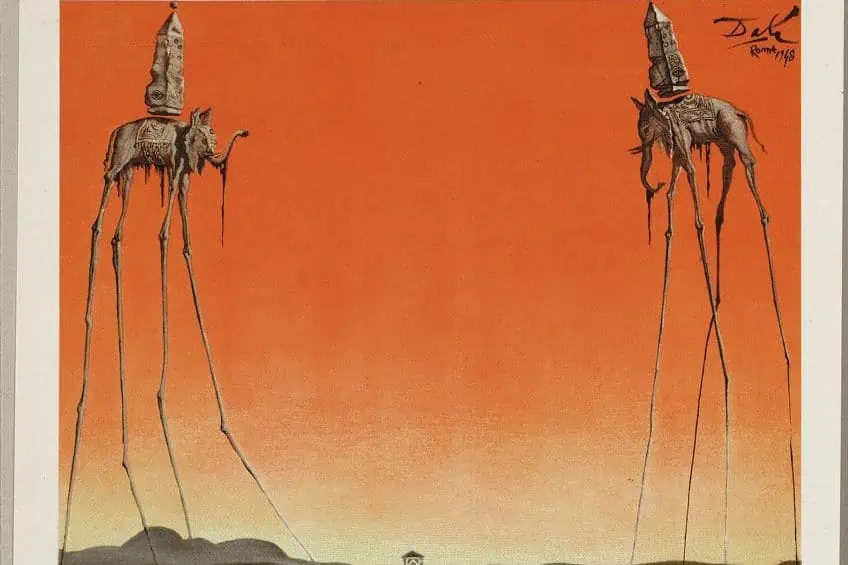Famous 20th Century Artists – Figures Who Shaped the Century
The 20th century marked the world’s introduction to modern technology and saw many moment-defining events in art history that produced some of the most influential and impactful works of the century. From movements like Cubism and Pop Art to Surrealism and post-Modernism art, many artists branched off to develop new ways of making and interpreting art that continues to inspire artists today. In this article, we will explore the 15 greatest painters of the 20th century whose legacies live on! Keep reading for more about these phenomenal legends.
Contents
- 1 The Development of Art in the 20th Century
- 2 Reviewing the Top 15 Greatest Painters of the 20th Century
- 2.1 Wassily Kandinsky (1866 – 1944)
- 2.2 Henri Matisse (1869 – 1954)
- 2.3 Piet Mondrian (1872 – 1944)
- 2.4 Raoul Dufy (1877 – 1953)
- 2.5 Kazimir Malevich (1879 – 1935)
- 2.6 Paul Klee (1879 – 1940)
- 2.7 Pablo Picasso (1881 – 1973)
- 2.8 Georgia O’Keeffe (1887 – 1986)
- 2.9 Mark Rothko (1903 – 1970)
- 2.10 Salvador Dalí (1904 – 1989)
- 2.11 Frida Kahlo (1907 – 1954)
- 2.12 Jackson Pollock (1912 – 1956)
- 2.13 David Hockney (1937 – Present)
- 2.14 Bob Ross (1942 – 1995)
- 2.15 Jean-Michel Basquiat (1960 – 1988)
- 3 Frequently Asked Questions
The Development of Art in the 20th Century
The last century provided artists with many historical events that shaped and molded the 21st-century society today. While many art movements coincided with important historical events, tragedy in the age of industrial advancement was quite prominent. If one could find two words to describe the 20th century it would boil down to “rapid change”. With the passing of World War I and II, the American Civil War, the end of Apartheid, the weaponization of the atomic bomb, the crash of Wall Street, the Flu pandemic, the Holocaust, and the Space Race among many other historical events, art was an outlet of creative escape and tool for social and political activism.
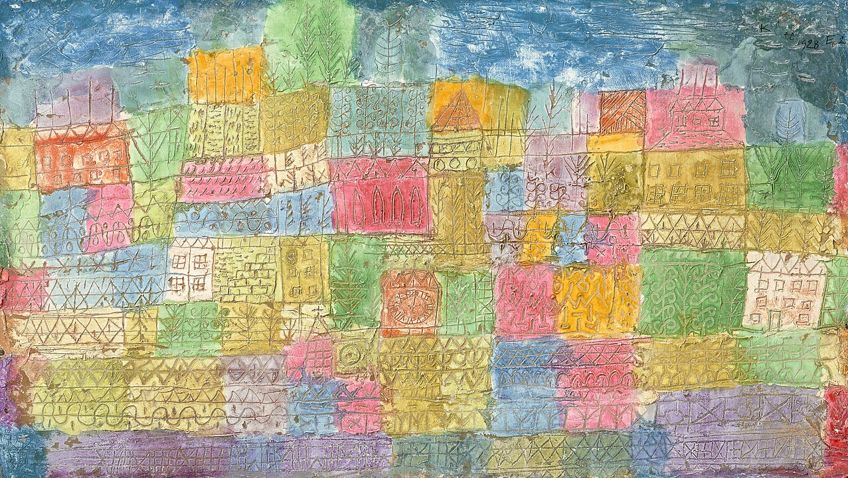
Art movements that defined a shift in the way art was changing with the dynamics of global politics and cultural influences include the Art Deco, Surrealism, post-Impressionist, Dadaism, Pop art, Social Realism, and Neo-Expressionism movements. In between these movements, numerous prolific figures emerged to help shape the styles and philosophies of each movement while advocating for their own personal socio-political agendas. Modern art was very much informed by the growing pains of reality and a changing world that saw both losses and wins across the globe. The genre of painting, a traditional art form, endured despite the rapid adoption of photography and evolved via different art styles and movements into Contemporary artworks inspired by modern art styles. The development of Modern painting was characterized by a rejection of academic styles of painting and the incorporation of mixed media.
The notions of beauty and representation in painting also shifted to include more abstract forms, which destabilized the ideas around what could be painted and what defined a painting.
Reviewing the Top 15 Greatest Painters of the 20th Century
One could go on and on about the most successful and influential artists of the 20th century, however, these 15 painting legends have immortalized themselves in art history. Below, we will introduce you to the 15 greatest painters of the 20th century who have helped shape and expand the medium of painting and traditional academic ideas of fine art.
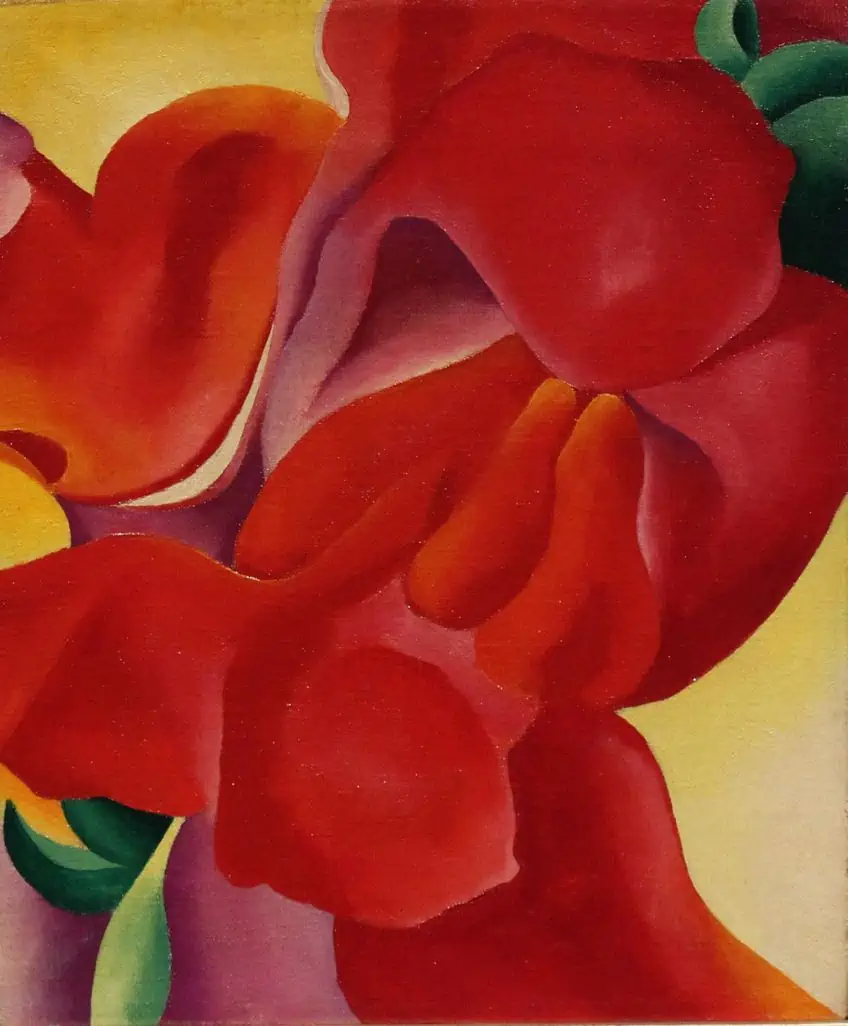
Wassily Kandinsky (1866 – 1944)
| Name | Wassily Wassilyevich Kandinsky |
| Date of Birth | 16 December 1866 |
| Date of Death | 13 December 1944 |
| Nationality | Russian |
| Associated Movements, Themes, and Styles | Expressionism, Modern art, Der Blaue Reiter, and Abstract art |
| Mediums | Painting |
| Famous Artworks | ● The Blue Rider (1903) ● Yellow-Red-Blue (1925) ● Several Circles (1926) ● Composition X (1939) |
Wassily Kandinsky was among the best experimental art theorists and Modern artists of the 20th century whose contributions to Expressionism and an understanding of the role of color in painting have left a considerable impact on Contemporary art. Kandinsky’s paintings are incredibly recognizable and demonstrate his approach to color theory and the spiritual expression of human emotions. In his art, he adopted geometric shapes and lines to convey universal expressions of emotion that transcend conventional teachings.
Kandinsky’s paintings also reflect his interest in colors as a reflection of human vibrations and the power of such vibrations carried by physical organisms.
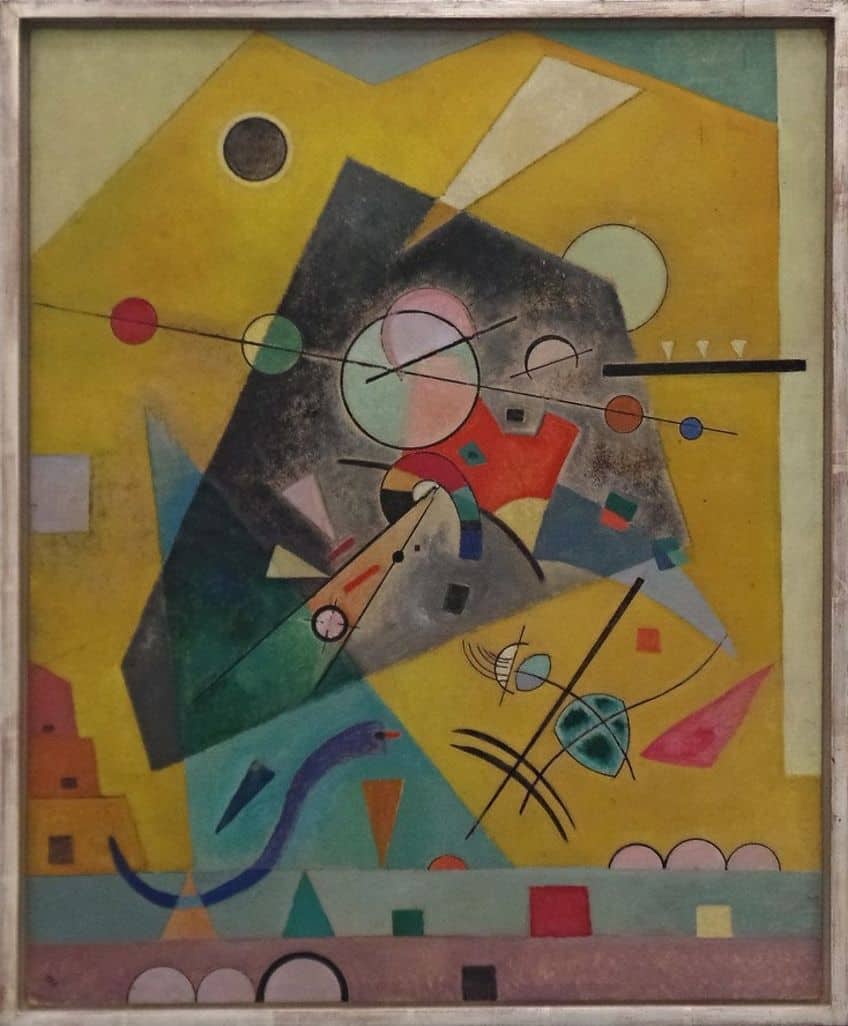
Henri Matisse (1869 – 1954)
| Name | Henri Émile Benoît Matisse |
| Date of Birth | 31 December 1869 |
| Date of Death | 3 November 1954 |
| Nationality | French |
| Associated Movements, Themes, and Styles | Fauvism, Impressionism, Modern art, Post-Impressionism, Modernism, and Neo-Impressionism |
| Mediums | Painting, printmaking, drawing, and sculpture |
| Famous Artworks | ● Woman with a Hat (1905) ● The Green Stripe (1905) ● Le Bonheur de Vivre (1905 – 1906) ● Blue Nude (1907) ● Music (1910) |
Henri Matisse was considered to be the most talented painter of the Fauvist and post-Impressionist eras who popularized the cut-paper collage technique. Matisse called his new approach the gouache découpée method, which he invented out of necessity since he was diagnosed with colon cancer. Matisse’s painting style was characterized by the use of bold colors, a flat painting style, and detailed pattern work. He also promoted many
Symbolist ideas surrounding the joys of life, which reflects the happier moments of life that became part of one of the first Avant-Garde movements of the 20th century.
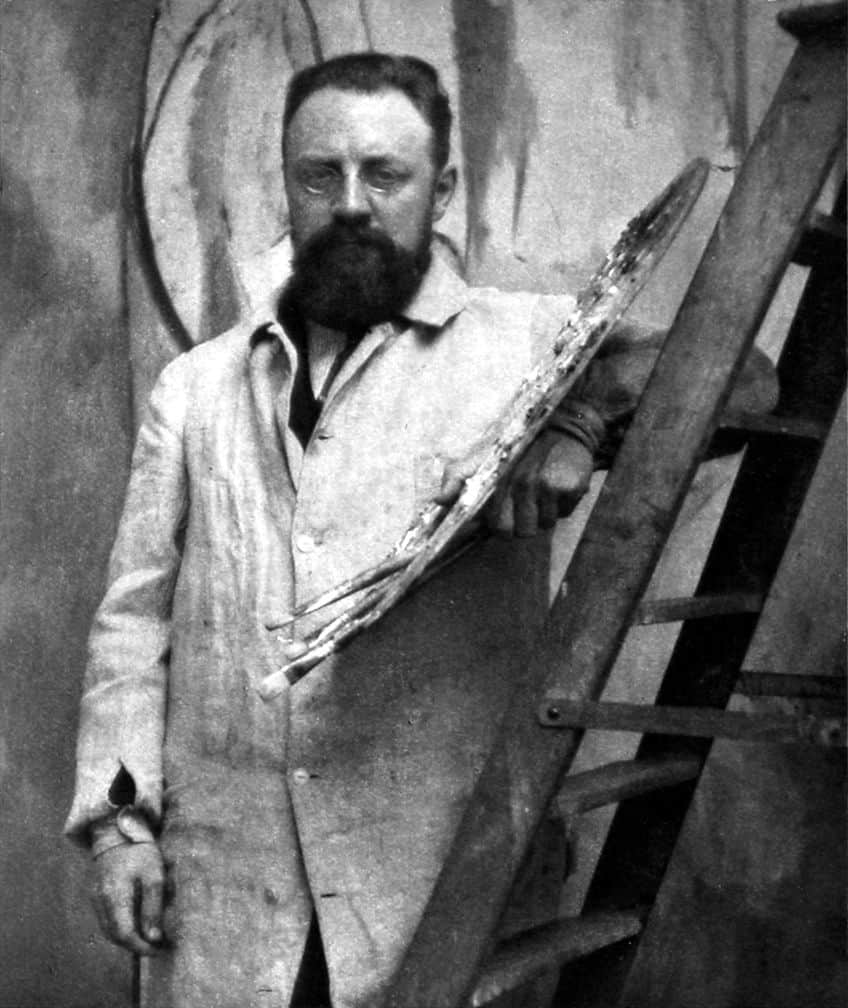
Piet Mondrian (1872 – 1944)
| Name | Pieter Cornelis Mondriaan |
| Date of Birth | 7 March 1872 |
| Date of Death | 1 February 1944 |
| Nationality | Dutch |
| Associated Movements, Themes, and Styles | De Stijl, Cubism, Modern art, Expressionism, Impressionism, Modernism, and Abstract art |
| Mediums | Painting |
| Famous Artworks | ● Gray Tree (1911) ● Tableau I (1921) ● Composition A (1923) ● Trafalgar Square (1939 – 1943) ● Victory Boogie Woogie (1944) |
Piet Mondrian was a highly influential Dutch painter and art theoretician who was closely associated with the De Stijl movement and best known for his bright primary-colored grid paintings, which were created in the first quarter of the 20th century. Mondrian’s work was also informed by Cubist approaches and was considered to be an early form of abstract art. He coined his own style “neoplasticism” and reflected his subjective interpretation of philosophies and ideals about art that he treasured.
Characterized by a combination of yellow, blue, and red rectangles, Mondrian’s paintings embody the harmony of the cosmos.
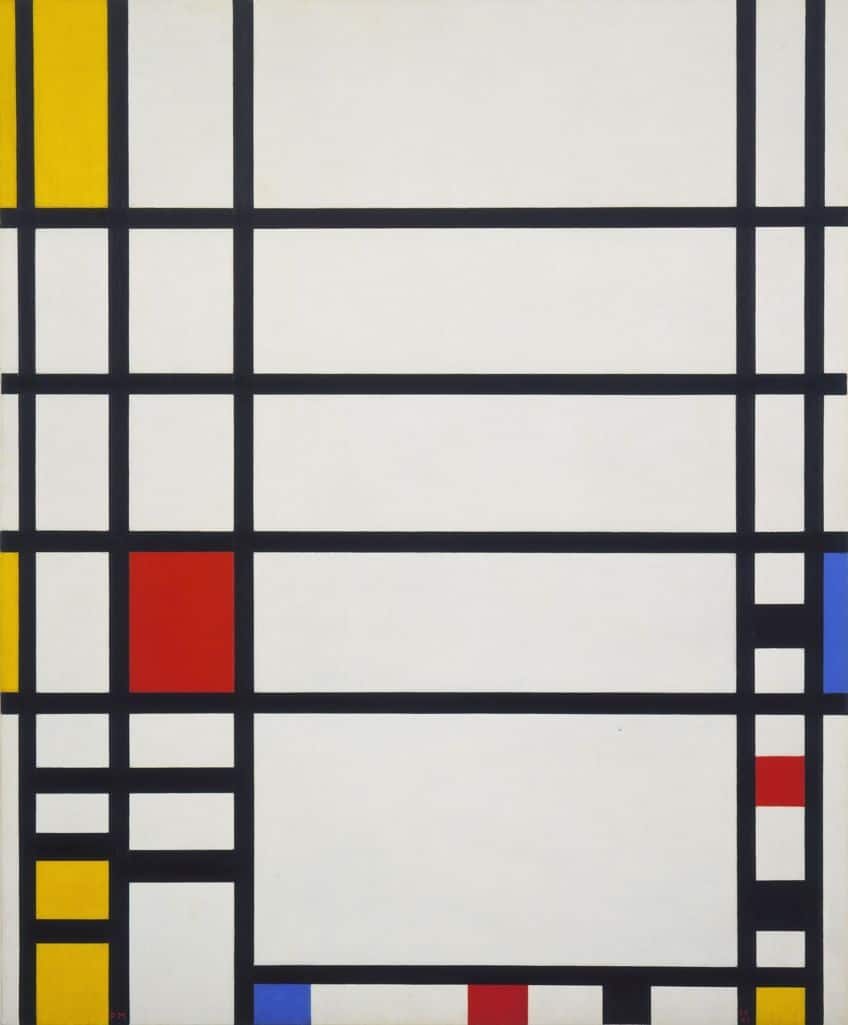
Raoul Dufy (1877 – 1953)
| Name | Raoul Dufy |
| Date of Birth | 3 June 1877 |
| Date of Death | 23 March 1953 |
| Nationality | French |
| Associated Movements, Themes, and Styles | Fauvism, Abstract art, Modern art, Modernism, Impressionism, Cubism, landscape art, social events, and decorative art |
| Mediums | Watercolor painting, design, drawing, oil painting, book illustration, printmaking, and furniture design |
| Famous Artworks | ● The Visit of the English Squadron to Le Havre (1925) ● L’atelier de l’artiste au Havre (1929) ● Léda et le Cygne (1930) ● L’Atelier à Vence (1945) |
Fauvist painter Raoul Dufy was among the 20th century’s most innovative and experimental painters. Raoul Dufy combined the visual languages of calligraphy with graphic colors, bold lines, and design to produce some of the most playful landscapes and urban scenes. Dufy was also a designer who graduated from the École Nationale Supérieure des Beaux-Arts and traveled extensively to develop his Fauvist style. Towards the end of his career, he suffered from arthritis and had to fasten paintbrushes to his hands to continue working since he could not let go of his passion easily.
Some of his best-known paintings include L’atelier de l’artiste au Havre (1929) and L’Atelier à Vence (1945).
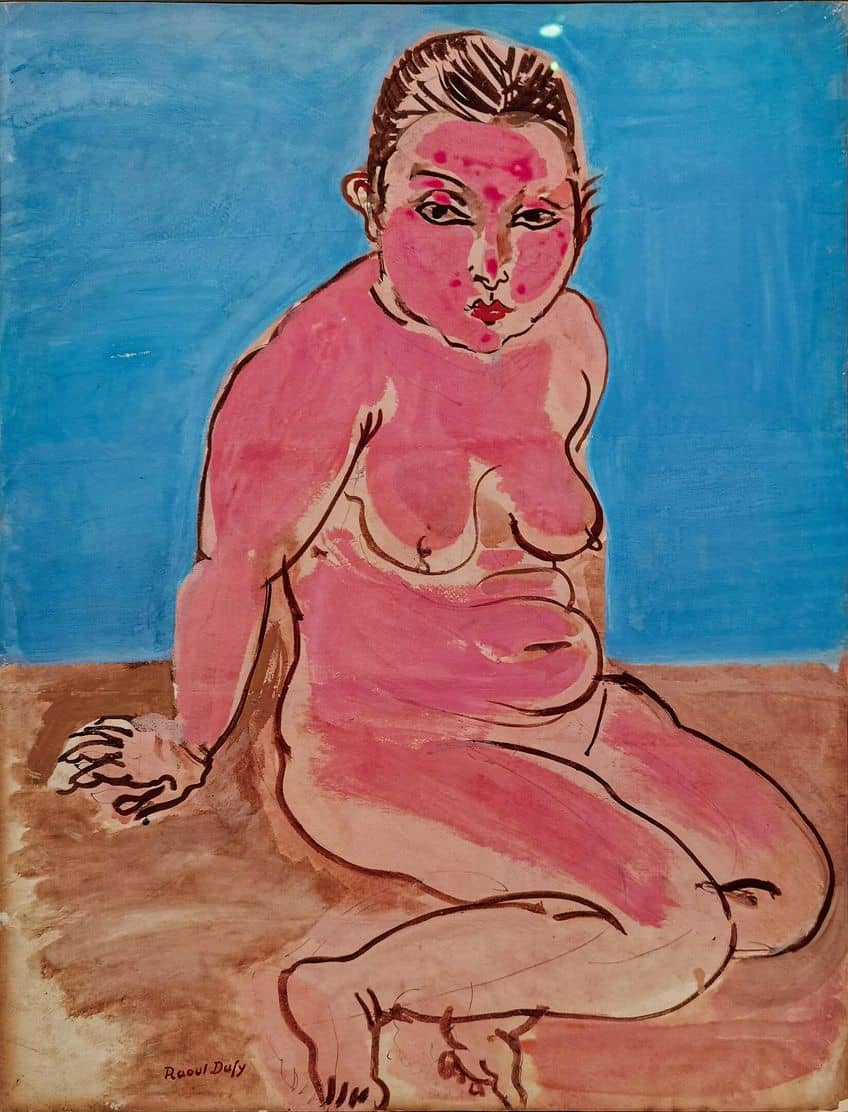
Kazimir Malevich (1879 – 1935)
| Name | Kazimir Severinovich Malevich |
| Date of Birth | 23 February 1879 |
| Date of Death | 15 May 1935 |
| Nationality | Russian |
| Associated Movements, Themes, and Styles | Avant-Garde, Social Realism, Suprematism, Cubism, and Geometric Abstraction |
| Mediums | Painting, writing, and sculpture |
| Famous Artworks | ● The Knifegrinder (1912) ● Woman at the Tram Stop (1913) ● Black Square (1915) ● White on White (1918) ● Marpha and Van’ka (1929) |
Kazimir Malevich was one of the most famous painters of the Suprematism movement who believed the color white to be the color of infinity. Malevich, who not only championed the school of Suprematism, also laid the foundations for abstract and non-objective art by using color to express pure feeling and perception in art. His paintings were considered to be a form of spiritual freedom from the rigid principles of academic painting. Among his best-known works are Black Square (1915) and White on White (1918), the former of which became a revolutionary symbol for a new era in art and painting. The black square painting was created to usher in the future and served as a flag to acknowledge the passing of Futurism.
Malevich also rejected the conventional understanding of Realism and established Suprematism to be the “new realism” expressed by abstract geometric forms and pure colors.
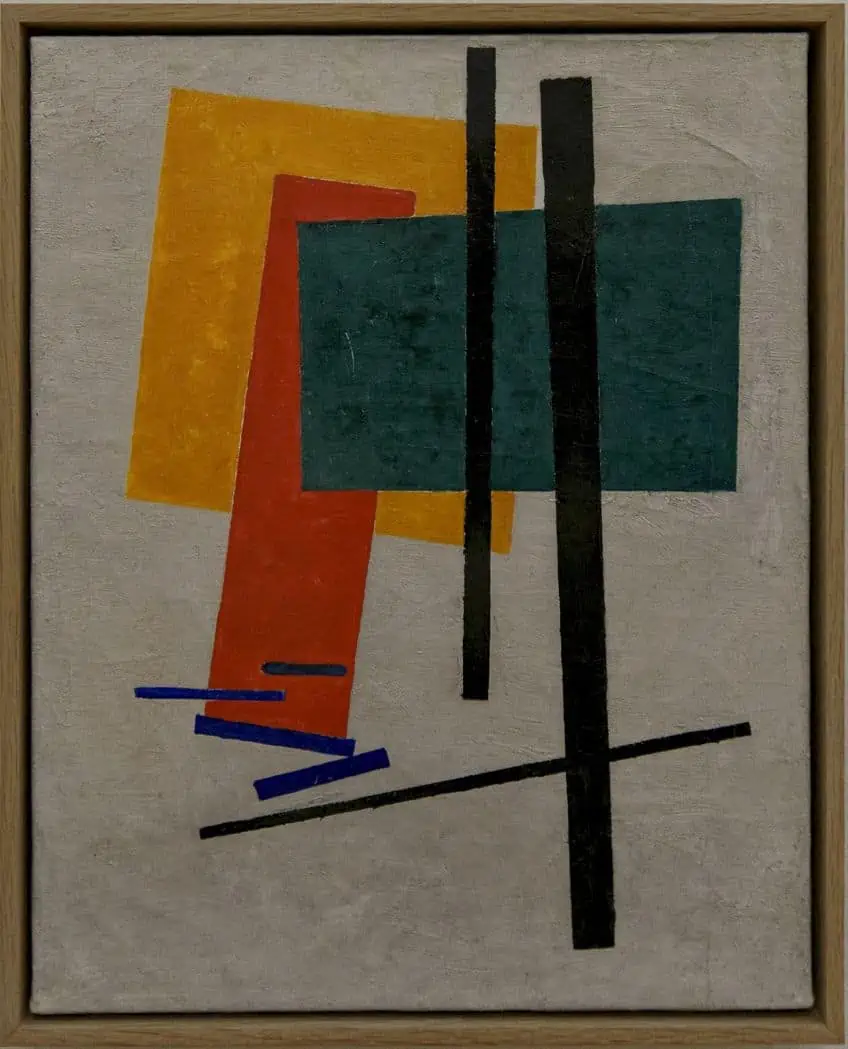
Paul Klee (1879 – 1940)
| Name | Paul Klee |
| Date of Birth | 18 December 1879 |
| Date of Death | 29 June 1940 |
| Nationality | Swiss |
| Associated Movements, Themes, and Styles | Expressionism, Modern art, Cubism, Surrealism, Der Blaue Reiter, Bauhaus style, animal painting, and portraiture |
| Mediums | Painting, drawing, and printmaking |
| Famous Artworks | ● In the Style of Kairouan (1914) ● Southern (Tunisian) Gardens (1919) ● They’re Biting (1920) ● A Young Lady’s Adventure (1922) ● Fish Magic (1925) ● Cat and Bird (1928) |
Swiss-German painter Paul Klee was one of the greatest painters of the 20th century who produced over 10,000 paintings during his career. Klee’s unique style was defined by his childlike approach to abstract expressionist painting and surrealist distortions of space. Klee was deeply invested in color theory and proposed the famous statement “One eye sees and the other feels”. Klee’s influence was also seen in the works of Abstract artists from the United States who praised his ability to generate a sense of eclectic movement in his compositions.
Some of his most celebrated works include paintings such as Fish Magic (1925) and Cat and Bird (1928).
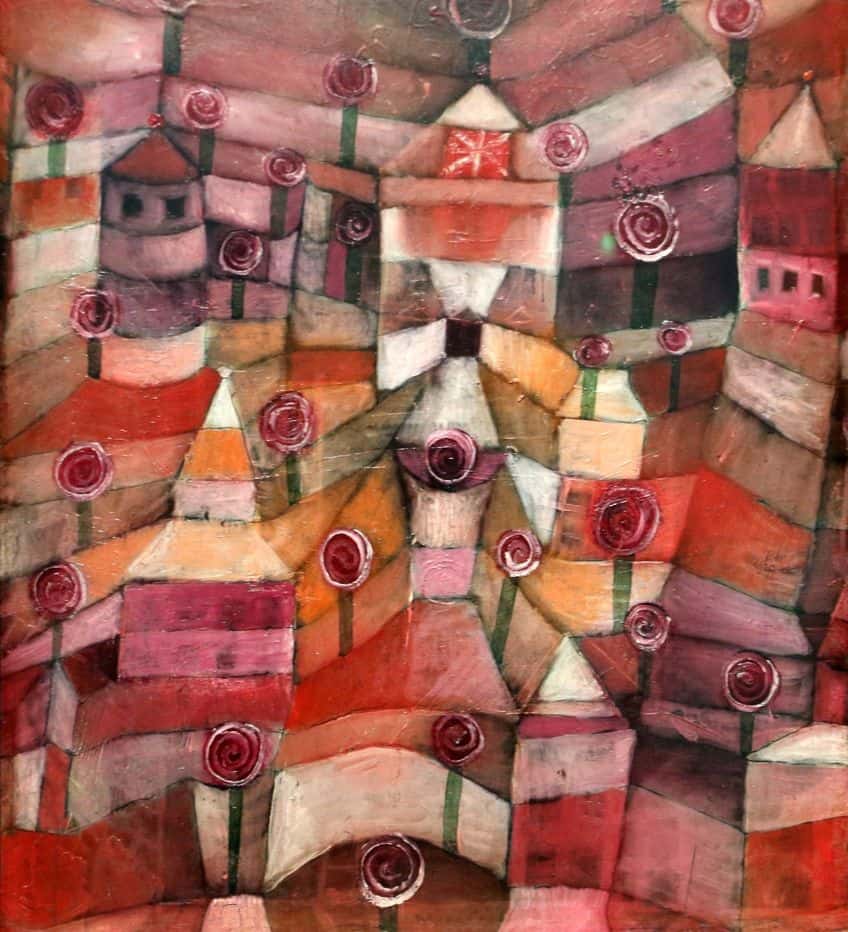
Pablo Picasso (1881 – 1973)
| Name | Pablo Ruiz Picasso |
| Date of Birth | 25 October 1881 |
| Date of Death | 8 April 1973 |
| Nationality | Spanish |
| Associated Movements, Themes, and Styles | Cubism, Surrealism, Modern art, Picasso’s Blue Period, Impressionism, and Expressionism |
| Mediums | Painting |
| Famous Artworks | ● The Old Guitarist (1903 – 1904) ● Les Demoiselles d’Avignon (1907) ● Guernica (1937) ● The Weeping Woman (1937) |
Spanish Modernist Pablo Picasso was a pioneer of the Cubist movement who experimented with the depiction of the human form and the 20th-century style associated with Primitivism. Picasso spent the majority of his career in France exploring themes such as melancholy, isolation, and misery, which are among the most complex emotions to unpack. Picasso was dubbed an inspirational artist for his pursuit of complex human emotions while showcasing both the light and dark aspects of life. The Spanish artist was also inspired by art from Africa, which helped him completely disassemble traditional painting conventions as practiced in France.
Some of his most iconic and impactful works include paintings such as The Old Guitarist (1903 – 1904) and Guernica (1937).
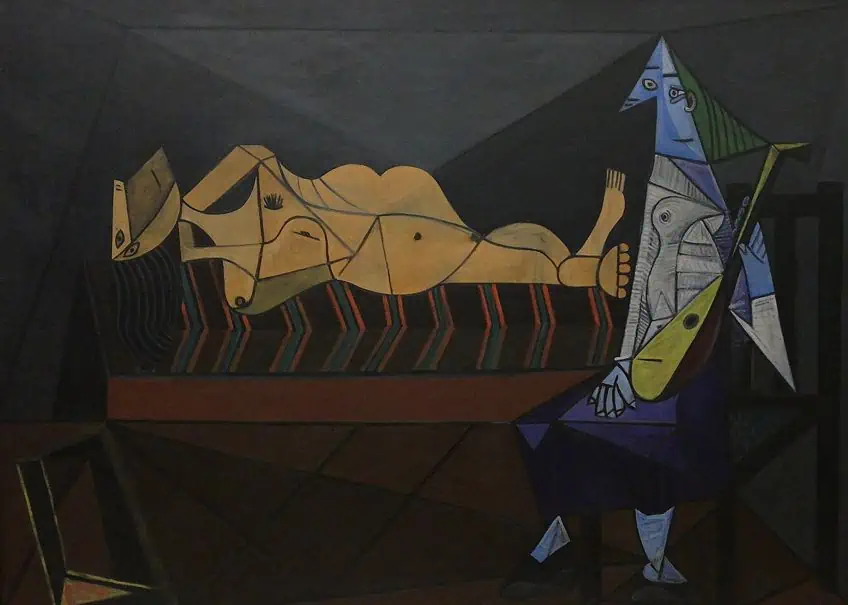
Georgia O’Keeffe (1887 – 1986)
| Name | Georgia Totto O’Keefe |
| Date of Birth | 15 November 1887 |
| Date of Death | 6 March 1986 |
| Nationality | American |
| Associated Movements, Themes, and Styles | American Modernism, Precisionism, and Modernism |
| Mediums | Painting |
| Famous Artworks | ● Red Canna (1923) ● From the Lake (1924) ● Black Iris (1926) ● Oriental Poppies (1928) |
Georgia O’Keeffe was among the greatest painters of the 20th century whose semi-abstract paintings of still-lifes, landscapes, and large-scale close-ups of flowers made her one of the most unique artists at the time. O’Keeffe’s painting style was characterized by modern scenes and evocative shapes that set her work apart from many female painters and earned her the title of “mother of American Modernism”. During her career, O’Keeffe created more than 2,000 paintings that reflected her mastery over line, composition, and color. In the 1970s, O’Keeffe saw a period of struggle as she stopped painting due to her eye condition called macular degeneration, which only left her with sight in her peripherals.
Since O’Keeffe’s famous flower paintings resemble female genitalia, many of her male critics found her work vulgar and provocative, however, in the Contemporary era, many can appreciate the duality of her work and the power that it held in encouraging other female artists to power through in their artistic pursuits.
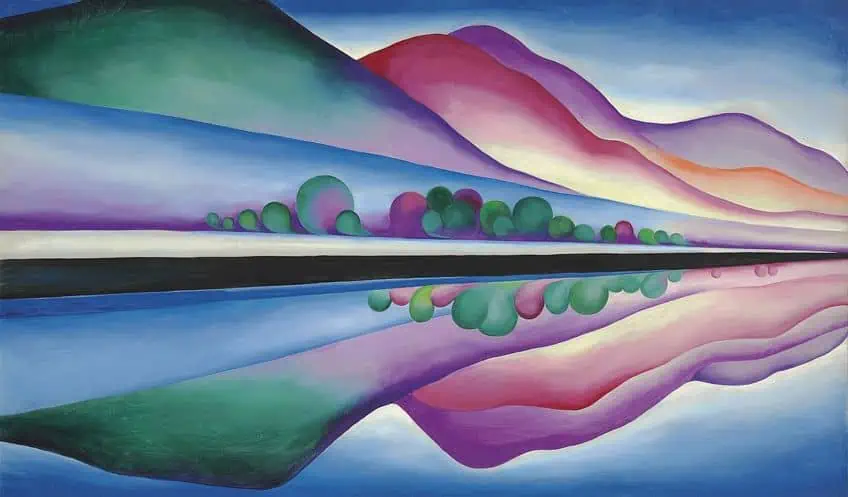
Mark Rothko (1903 – 1970)
| Name | Markus Yakovlevich Rothkowitz |
| Date of Birth | 25 September 1903 |
| Date of Death | 25 February 1970 |
| Nationality | Latvian-American |
| Associated Movements, Themes, and Styles | Abstract Expressionism, Color field painting, and Modern art |
| Mediums | Painting |
| Famous Artworks | ● Entrance to Subway (1938) ● Untitled (1952) ● No.61 (Rust and Blue) (1953) ● Orange and Yellow (1956) ● Untitled (Black on Grey) (1970) |
Mark Rothko was one of the most prolific Abstract Expressionist painters of the 20th century who preferred to remain free from any categorization in terms of which movement he identified with. The Latvian-American painter was best known for his color-field paintings, expressed as consistent large rectangles of solid color, which he produced for around 20 years. Rothko’s approach to non-objective art without the need for representation can be seen as a spiritual practice that employs the viewer to introspect upon the solid infills of color and occupation of space. Rothko’s focus was on inciting the viewer to express pure and basic emotions such as doom and tragedy.
Today, his paintings are worth hundreds of millions of dollars with one of his record-breaking sales occurring in 2014 at Christie’s, which fetched $186 million and is probably worth a lot more today.
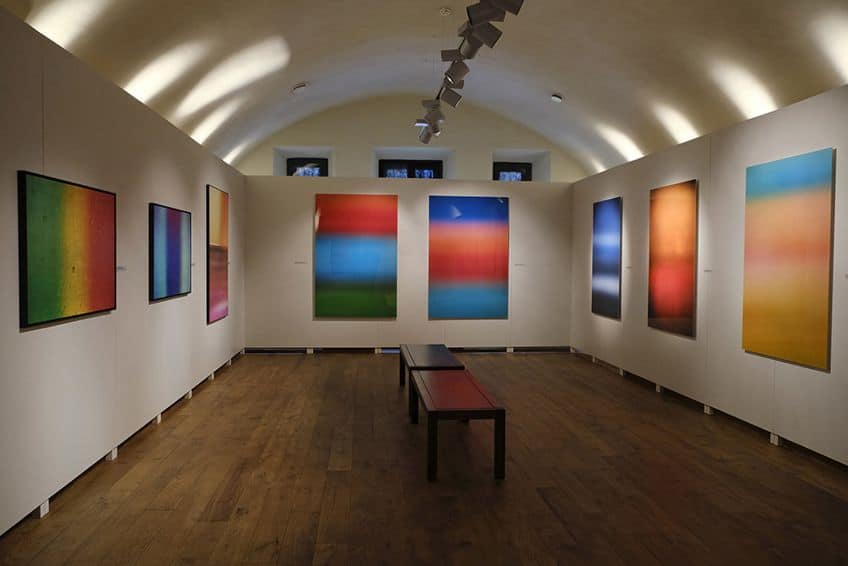
Salvador Dalí (1904 – 1989)
| Name | Salvador Domingo Felipe Jacinto Dalí i Domènech |
| Date of Birth | 11 May 1904 |
| Date of Death | 23 January 1989 |
| Nationality | Spanish |
| Associated Movements, Themes, and Styles | Dada, Surrealism, Modern art, and Cubism |
| Mediums | Painting, sculpture, drawing, photography, and design |
| Famous Artwork | ● The Great Masturbator (1929) ● The Persistence of Memory (1931) ● Soft Construction with Boiled Beans (Premonition of Civil War) (1936) ● Metamorphosis of Narcissus (1937) |
Salvador Dalí is a name you cannot miss when reviewing the greatest painters of the 20th century. Dalí was an icon of the Surrealism movement and a renowned Spanish artist who was admired for his technical painting skills as well as complex compositions that reflected his subconscious interpretation of reality. Dalí was also praised for his contribution to creative film and set design while popularizing his unforgettable mustache. Prominent themes in his work discuss his sexual desires as well as matters of the unconscious mind.
One might also recall the surreal visual of the melting clock from Dalí’s most iconic painting, The Persistence of Memory (1931).
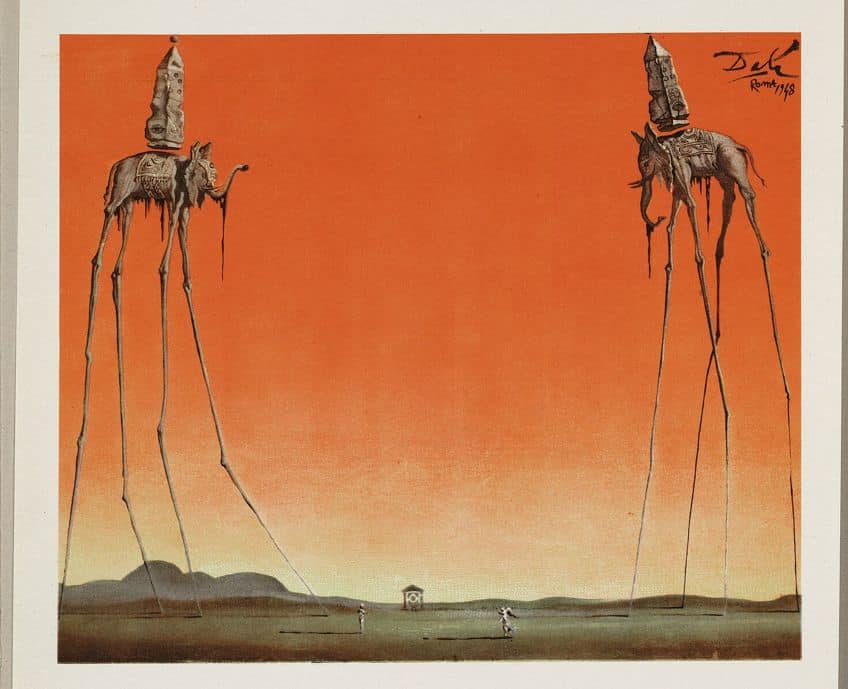
Frida Kahlo (1907 – 1954)
| Name | Magdalena Carmen Frida Kahlo y Calderón |
| Date of Birth | 6 July 1907 |
| Date of Death | 13 July 1954 |
| Nationality | Mexican |
| Associated Movements, Themes, and Styles | Surrealism, Symbolism, Magic Realism, Naturalism, Primitivism, and Modern art |
| Mediums | Painting and drawing |
| Famous Artworks | ● Self-Portrait with Monkey (1938) ● The Two Fridas (1939) ● The Broken Column (1944) ● The Wounded Deer (1946) ● Diego and I (1949) |
One cannot forget the best painter of human suffering and pain, Frida Kahlo whose many touching and symbolic paintings have become iconic representations of the complexities of human emotion in the face of love, loss, and identity. Kahlo’s unique approach to painting was largely defined by her personal experiences as well as her Mexican heritage and development of self after her automobile accident, which left her to deal with chronic physical pain. Her inspiration was also drawn from her interest in Mexican artifacts and history, which featured in her vivid and Surreal paintings. Kahlo’s work was also shaped by Magical Realism, which is a literary term that refers to elements of reality that carry a sense of fantasy or magic about them.
Kahlo’s self-portraits are one of a kind and are celebrated for their depiction of the Mexican woman’s experience.
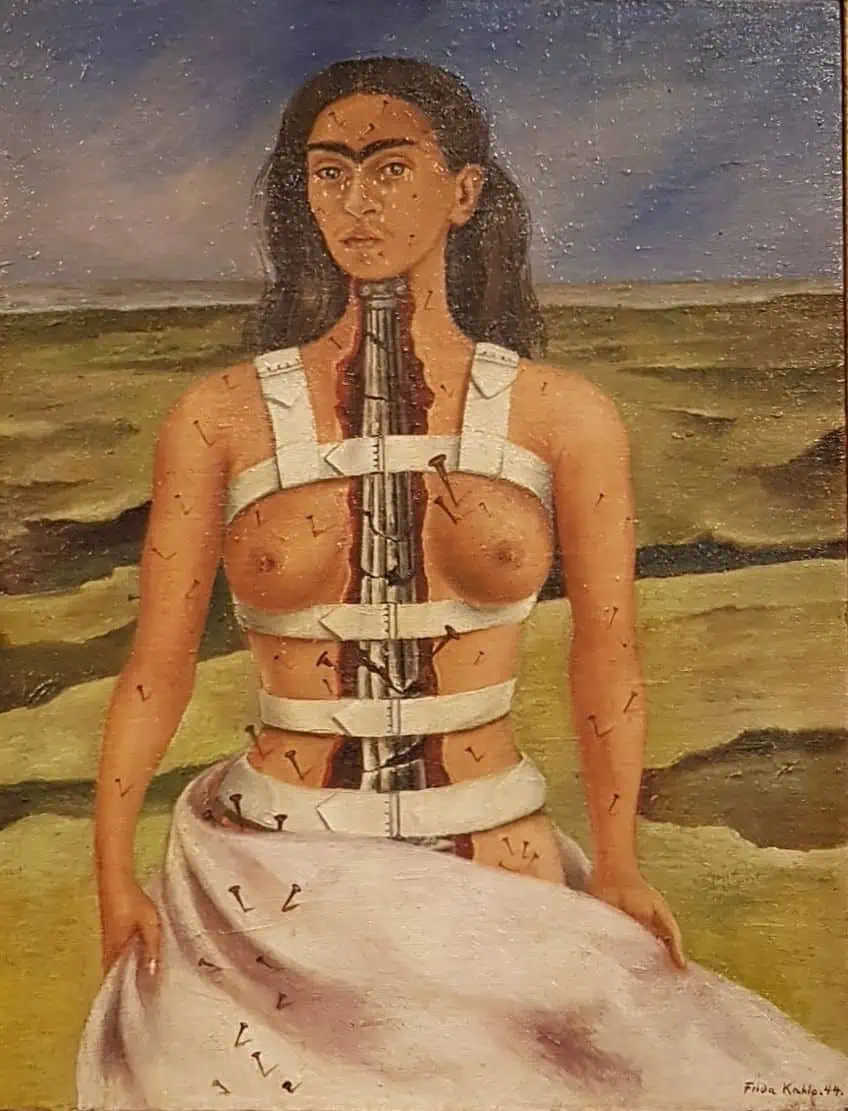
Jackson Pollock (1912 – 1956)
| Name | Paul Jackson Pollock |
| Date of Birth | 28 January 1912 |
| Date of Death | 11 August 1956 |
| Nationality | American |
| Associated Movements, Themes, and Styles | Abstract Expressionism, action painting, and Modern art |
| Mediums | Painting |
| Famous Artworks | ● Mural (1943) ● The She-Wolf (1943) ● Full Fathom Five (1947) ● Convergence (1952) ● Blue Poles (1952) |
Jackson Pollock was one of the most famous 20th-century artists who popularized action painting in the Abstract Expressionism movement. Globally renowned for the drip technique, Pollock’s intuitive and free-flowing paintings helped alter pre-existing notions of painting and what modern art could look like. His abstraction of the pictorial space using line and color helped establish for himself a unique style characterized by sinuous lines of color, overlapping one another in an exploration of gestural abstraction.
Using various gestures, paint-pouring techniques, and physical motions, Pollock’s work became a poetry of movement and gesture made evident through the motion of lines and selection of colors to form unique splatters.
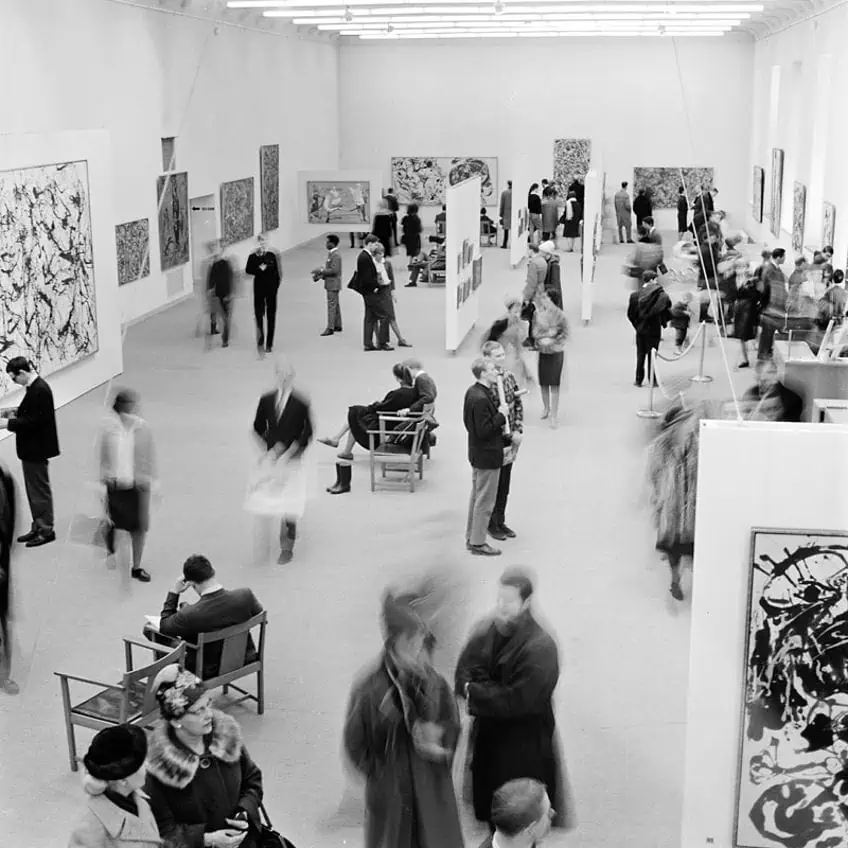
David Hockney (1937 – Present)
| Name | David Hockney |
| Date of Birth | 9 July 1937 |
| Date of Death | Present |
| Nationality | English |
| Associated Movements, Themes, and Styles | Pop art, Modern art, and Contemporary art |
| Mediums | Painting, screen printing, etching, lithography, photography, digital art, and drawing |
| Famous Artworks | ● A Bigger Splash (1967) ● Portrait of an Artist (Pool with Two Figures) (1972) ● My Parents (1977) ● Joiners (1983) ● A Closer Grand Canyon (1998) |
David Hockney is perhaps one of the best British painters of the 20th century whose career in the United Kingdom was largely defined by his unique approach to British Pop art. Hockney is considered to be the Andy Warhol of Britain and had also managed to dethrone one of the art world’s most expensive artists for a short period when one of his paintings sold for $90.3 million in 2018. Hockney is also not just a painter. The multi-talented artist also boasts experience in stage design, photography, printmaking, and drawing.
Among his best paintings include The Splash (1966) and Bigger Splash (1967), which combine elements of Cubism, Modernism, and Pop art to present unconventional yet attractive modern paintings.
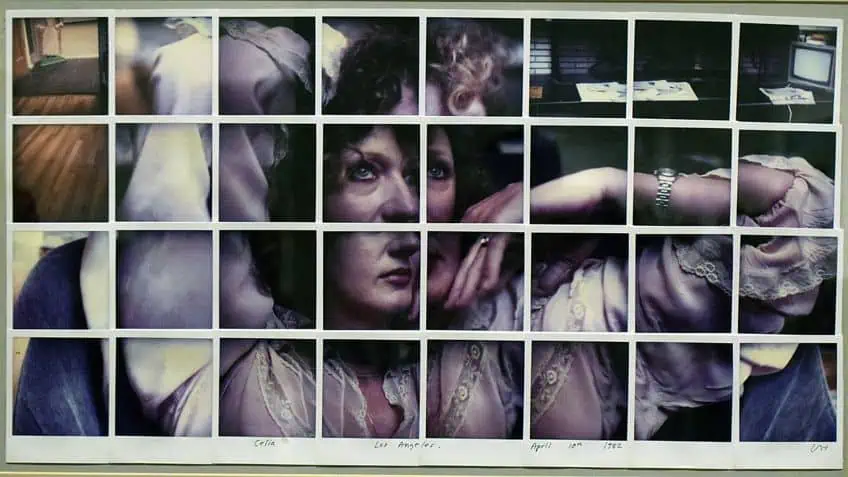
Bob Ross (1942 – 1995)
| Name | Robert Norman Ross |
| Date of Birth | 29 October 1942 |
| Date of Death | 4 July 1995 |
| Nationality | American |
| Associated Movements, Themes, and Styles | Modern art, landscape art, and art education |
| Mediums | Painting |
| Famous Artworks | ● The Old Mill (1984) ● Mountain Retreat (1984) ● Bubbling Stream (1984) |
Bob Ross was an icon of landscape painting and art education who you may remember from YouTube or PBS. Ross’ intention around creating art was more focused on teaching aspiring painters how to create the most tranquil and picture-perfect landscapes while enjoying the act of painting itself. Ross’ lighthearted nature and strong technical painting skills were a unique and influential combination for a television series that garnered millions of fans across the world. It is safe to say that Bob Ross was one of the most influential and most-liked painters of the 20th century.
Over two decades since his death, many young artists continue to reminisce on Ross’s painting tutorials, which continue to air on platforms such as Amazon Prime and Hulu.
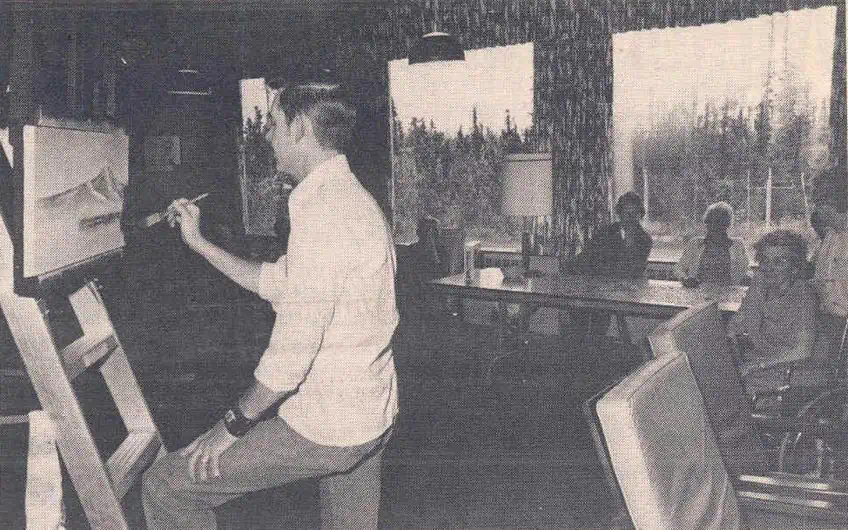
Jean-Michel Basquiat (1960 – 1988)
| Name | Jean-Michel Basquiat |
| Date of Birth | 22 December 1960 |
| Date of Death | 12 August 1988 |
| Nationality | American |
| Associated Movements, Themes, and Styles | Neo-Expressionism |
| Mediums | Painting and drawing |
| Famous Artworks | ● Untitled (Boxer) (1982) ● Hollywood Africans (1983) ● In Italian (1983) ● Riding with Death (1988) |
Jean-Michel Basquiat was a pioneer of the Neo-Expressionist movement and one of the most famous 20th-century artists who quickly rose to fame in the 1980s at the young age of 20. Many celebrities have paid millions for a Basquiat painting due to the icon’s unique visual aesthetic and enigmatic symbols. What makes Basquiat’s work so important was that the young artist touched on subjects such as segregation and the disparity between the wealthy and the poor. His appropriation of poetry and edgy graffiti art style championed a fusion of abstract expressionist and emerging street art within the New York fine art scene, which was seen as fresh, appealing, and rich in its visual layering. Today, Basquiat’s paintings are still being exhibited and promoted across the world through merchandise, special art exhibitions, and mass-produced print media. The depth of his work undoubtedly shines through in the 21st century and continues to inspire many young Contemporary artists.
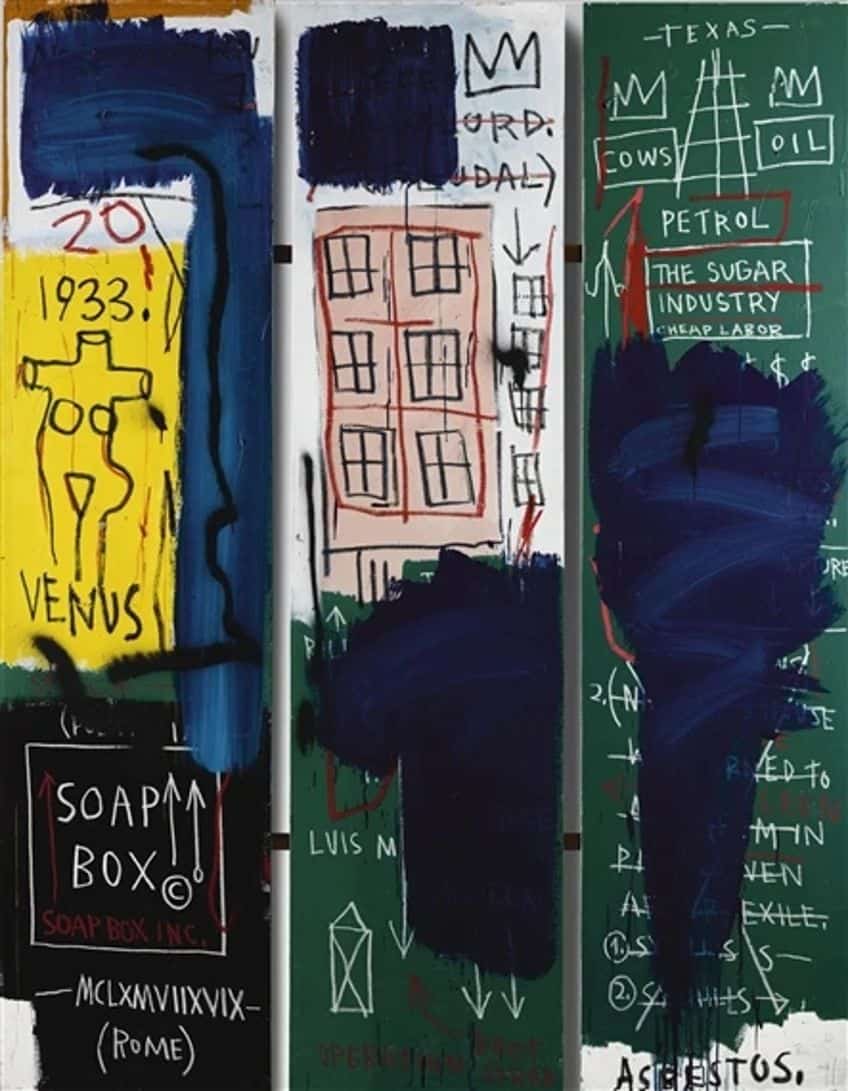
These famous 20th-century artists have all leveraged their unique viewpoints and experimental approaches to fuel significant changes in the development of Modern art. From Wassily Kandinsky to Jean-Michel Basquiat, the genre of painting has seen tremendous improvement in the arena of inclusivity, alternative modes of representation, and innovative art styles. We hope that by examining the works of these icons, you can be inspired to invent your own theories on color and painting that can help expand notions of 21st-century visual languages in painting.
Take a look at our 20th-century artists webstory here!
Frequently Asked Questions
Who Was the Most Famous Painter of the 20th Century?
Pablo Picasso was considered to be the most famous painter of the 20th century who was responsible for many famous paintings in European art history, including The Old Guitarist (1903) and Guernica (1937).
What Was the Most Famous Painting of the 20th Century?
Les Demoiselles d’Avignon (1907) by Pablo Picasso was considered to be the most famous painting of the 20th century. The painting portrays five nude women who are said to be sex workers painted in a Primitivist style. The painting is currently housed in a permanent collection at the Museum of Modern Art in New York City.
Which Were the Most Influential Art Movements of the 20th Century?
A selection of the most influential art movements of the 20th century includes Cubism, Fauvism, Dadaism, Futurism, Surrealism, Pop Art, Abstract Expressionism, Minimalism, Conceptual Art, Photorealism, and Neo-Expressionism among the most impactful movements. Many 21st-century artists have been inspired by the art styles and artists from these movements.
Liam Davis is an experienced art historian with demonstrated experience in the industry. After graduating from the Academy of Art History with a bachelor’s degree, Liam worked for many years as a copywriter for various art magazines and online art galleries. He also worked as an art curator for an art gallery in Illinois before working now as editor-in-chief for artfilemagazine.com. Liam’s passion is, aside from sculptures from the Roman and Greek periods, cave paintings, and neolithic art.
Learn more about Liam Davis and about us.
Cite this Article
Liam, Davis, “Famous 20th Century Artists – Figures Who Shaped the Century.” artfilemagazine – Your Online Art Source. October 2, 2023. URL: https://artfilemagazine.com/famous-20th-century-artists/
Davis, L. (2023, 2 October). Famous 20th Century Artists – Figures Who Shaped the Century. artfilemagazine – Your Online Art Source. https://artfilemagazine.com/famous-20th-century-artists/
Davis, Liam. “Famous 20th Century Artists – Figures Who Shaped the Century.” artfilemagazine – Your Online Art Source, October 2, 2023. https://artfilemagazine.com/famous-20th-century-artists/.


